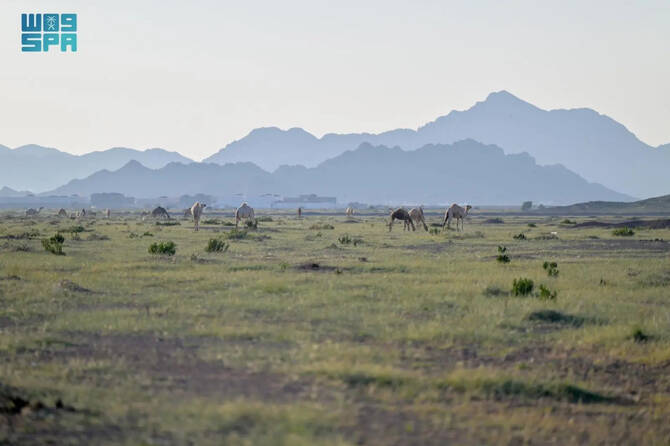Saudi University Develops AI System for Camel Herders
Riyadh — Researchers at a Saudi university have developed a low-cost, AI-powered drone system designed to help camel herders monitor and manage their animals more effectively across remote desert areas.
The technology offers a new tool for understanding camel behavior while supporting one of the region’s oldest traditional livelihoods.
The system was created by Professor Basem Shihada and his team at King Abdullah University of Science and Technology. According to the researchers, the goal was to build an affordable alternative to GPS collars and satellite tracking devices, which are often expensive and difficult for herders to maintain.
Using commercially available drones and basic camera equipment, the team collected aerial footage of small camel groups in different desert locations.
This footage was then used to train a machine-learning model that can recognize and follow camels in real time as they move across wide, open terrain.
KAUST scientist Chun Pong Lau said the AI model revealed consistent patterns in camel movement that were previously difficult to measure.
“We found that their migration patterns were not random but formed recognizable behavioral trends,” he explained while outlining the study’s results.
According to the researchers, older camels in particular displayed coordinated grazing behavior over long distances throughout the day.
Despite their wide movement range, the animals routinely returned to the herder’s camp by sunset, maintaining a regular daily rhythm.
The team noted that camels appeared highly sensitive to drone noise, especially at lower altitudes. For this reason, flights were kept at or above 120 meters to ensure minimal disturbance to the herds while still capturing clear visual data.
Camels have long played a central role in Arabian life, serving as a means of transport, a source of food, and an enduring symbol of cultural identity. Today, camel-related industries—including dairy, meat, racing, textiles and tourism—are valued at more than SR2 billion annually within the Kingdom.
Despite their importance, camel herding continues to bring significant challenges for those responsible for managing the animals. Camel herds may roam up to 50 kilometers a day, making it difficult for herders to track their movements and prevent incidents.
This wide mobility can result in loss of livestock, overgrazing of natural vegetation, and road accidents involving stray camels. The new AI system aims to reduce these risks by giving herders a practical tool to monitor their animals from above.
With real-time aerial tracking, herders can quickly determine the location, direction and spread of their herds. This could help prevent camels from approaching dangerous areas or wandering too far during daily grazing cycles.
In addition to helping herders, the system offers new possibilities for researchers studying camel ecology. The data gathered from drone flights can help identify long-distance movement habits, grazing routes, and social group behavior over extended periods.
The research team plans to expand the project by collecting video of larger and more diverse herds. By training the AI model with additional data, they aim to increase detection accuracy, especially in cases where camels differ in size, color or group density.
The next phase will also test the system in more challenging environments, including areas with complex terrain or vegetation. Such improvements may help adapt the technology for broader use, including wildlife monitoring and pastoral management in other regions.
According to the researchers, the ultimate objective is to offer camel herders a reliable, cost-effective and easy-to-operate tool. By reducing both labor and uncertainty, the system could support safer herding practices and better conservation of desert ecosystems.
The development represents a growing trend in the Kingdom toward integrating artificial intelligence into agricultural and environmental fields. As digital tools become more accessible, traditional sectors such as herding are beginning to adopt modern solutions to longstanding challenges.
For many herders, the system may provide a bridge between ancient desert practices and advanced technological capabilities.
By combining aerial monitoring with machine-learning analysis, it brings new efficiency to an occupation deeply rooted in regional culture.



